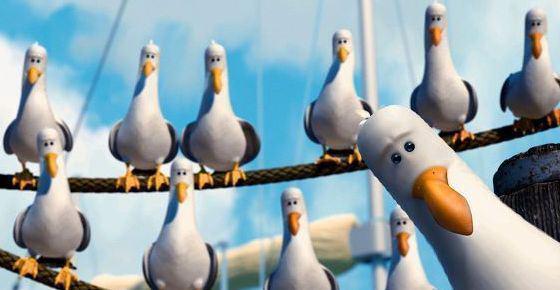Table of Contents
Group 7
<html><font size=6 face=“Arial”>Fishers vs Pirates: Does Crime Pay? </font></html>
Wiki site of the practical exercise of the VIII Southern-Summer School on Mathematical Biology.
Here you will find the exercise assignment and the group's products.
If you are a group member login to edit this page, create new pages from it, and upload files.
Introduction
 Some animals are widely known for resorting to a different way of obtaining food: theft. Species that steal for eating are known as kleptoparasites. Usually they choose other species as victims, but that's not always true. Some species, like the kelp gull (Larus dominicanus), steal from their own species (intraspecific kleptoparasitism). Each time a gull goes foraging, it may choose between being a fisher, and hunt its own food, or being a pirate, and steal another gull's food. The main reason for a gull to pirate is that, in some occasions, it may be easier to steal. However, there are several factors that affect the success of a stealing attempt, and sometimes being a pirate can be costlier than being a fisher.
Some animals are widely known for resorting to a different way of obtaining food: theft. Species that steal for eating are known as kleptoparasites. Usually they choose other species as victims, but that's not always true. Some species, like the kelp gull (Larus dominicanus), steal from their own species (intraspecific kleptoparasitism). Each time a gull goes foraging, it may choose between being a fisher, and hunt its own food, or being a pirate, and steal another gull's food. The main reason for a gull to pirate is that, in some occasions, it may be easier to steal. However, there are several factors that affect the success of a stealing attempt, and sometimes being a pirate can be costlier than being a fisher.
One factor that affects the success of pirates is how many of them exist in the population. If there are few pirates and many fishers, there might be many gulls to steal from, making the theft easier. Otherwise, if there are many pirates and few fishers, there may be competition between pirates, and finding a gull to steal from may be hard.
Food availability may also be a factor: if there is plenty of fish, then fishing may be very easy. The age of a gull may be important as well - juvenile gulls tend to have less experience on fishing and will choose to be a pirate more often. The handling time of the fish may also be relevant, as a fish that takes too long to handle leaves the fisher more susceptible to a pirate.
Assignment
Build a mathematical model that describes the number (or proportion) of fishers and pirates on a population of kelp gulls taking into account the factors that affect the choice of the gulls.
Suggested Questions
- If the gulls' behavior is adaptive, what would be the “optimal” proportion of pirates, from the point of view of the individual foraging?
- Are there conditions in which no gull would act as pirate?
- Is there an “optimal” proportion of pirates that yields a maximum population size?
Challenge
- From an evolutionary point of view, is there an “optimal” - evolutionarily stable - proportion of pirates?
References
Steele, W. K., & Hockey, P. A. (1995). Factors influencing rate and success of intraspecific kleptoparasitism among kelp gulls (Larus dominicanus). The Auk, 847-859.
